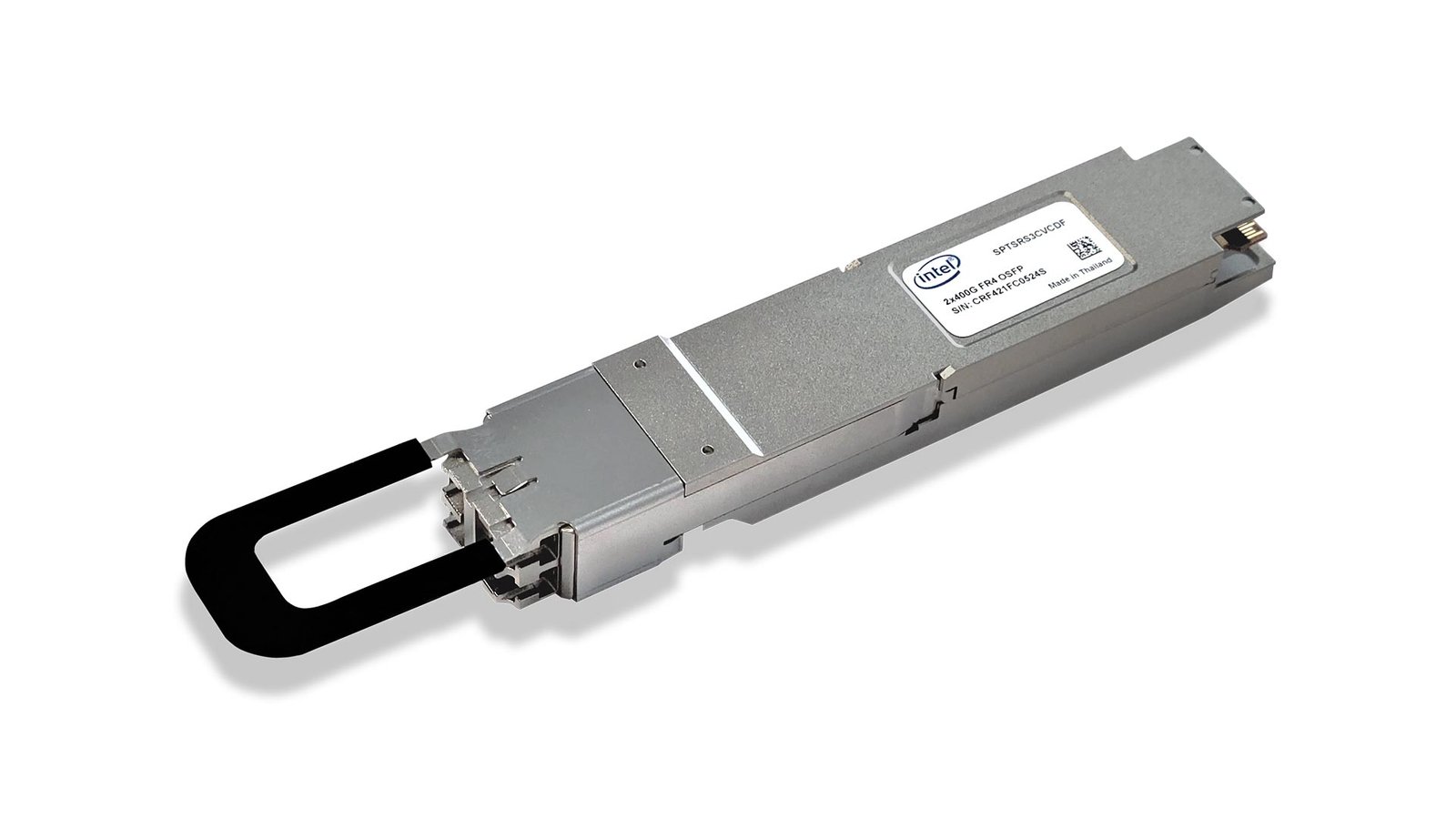OFC has an invited report “Silicon Photonics for 800G and Beyond” by Dr. Po Dong from II-VI this year. But there is no related video recorded on the OFC website, only paper. Therefore, Fiber Mall collects relevant materials here for your reference.
The report gives link budget calculation on the Tx side. The result of the DR8 type Tx is shown in the figure below.
The system contains two DFB lasers, two one-point-four beam splitters, and eight MZM modulators, with a loss of 15.9 dB at the Tx end,1.5 dB of coupling loss at the single end, 6 dB of insertion loss at the MZM, and an optical power of at least 16 dBm at the laser.
The Tx link of the 2xFR4 type is shown below, which contains two CWDM4 links. The system requires 4 wavelengths of DFB lasers, each laser is split by a one-two beam splitter, then passed through 8 MZM modulators, combined by two Muxes, and finally output through two fibers. The total loss of the link is 14.3 dB, which is 1.6 dB smaller than that of FR8 type. There is one less beam splitter in the link, and one more Mux with an insertion loss of 1.5 dB in comparison to FR8 type.
In both schemes, the single-channel MZM rate is 100 Gbps, making for a total rate of 800 Gbps, and the MZM is modulated by PAM4. Both schemes require a high power DFB laser with an optical power of at least 15dBm.
Intel demonstrated its 800G silicon optical Tx at this year’s OFC, which has a slightly different link due to its III-V heterogeneous integration technology, using eight laser inputs directly.
Rockley demonstrated its 800G silicon optical module at last year’s OFC, shown below, also in an 8*100G scheme.
Another option is to use four single-channel 200Gbps MZM modulators, as shown in the figure below. This places high demands on the silicon optical MZM modulator as well as the driver circuit. Acacia is making an attempt to do this.
To sum up, there is no mass production of silicon 800G optical modules on the market, which are still in the development stage. Most of them use 8 groups of single-channel 100G PAM4 MZM modulator,with large link loss, mainly from the coupling loss and MZM insertion loss, so high-power DFB lasers are required. QSFP-DD and OSFP are the two main types of form factors adopted. The information collected by Fiber Mall may not be comprehensive, comments are welcome.

